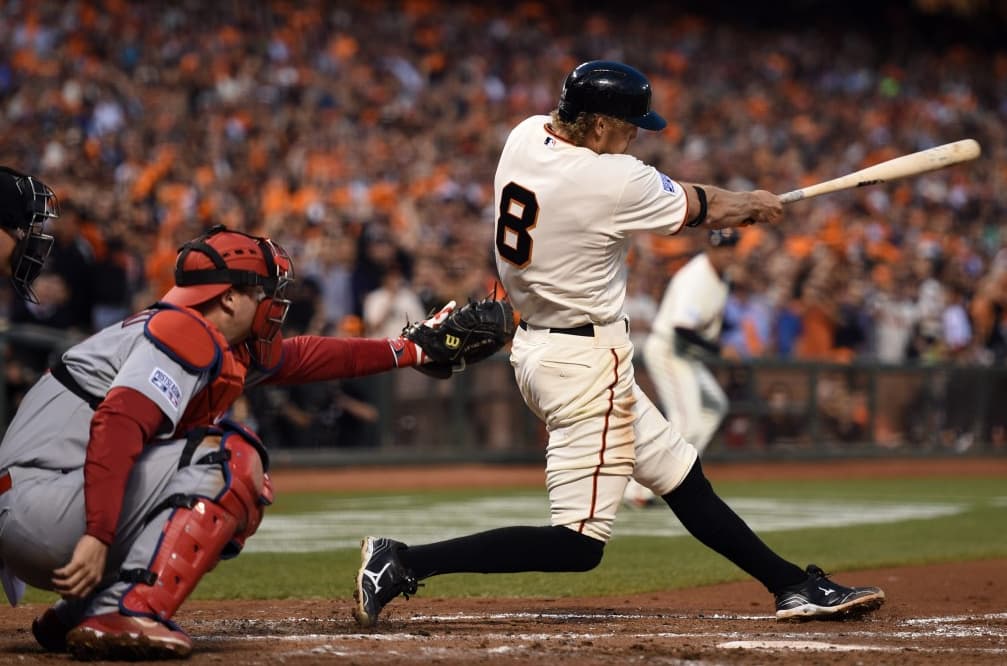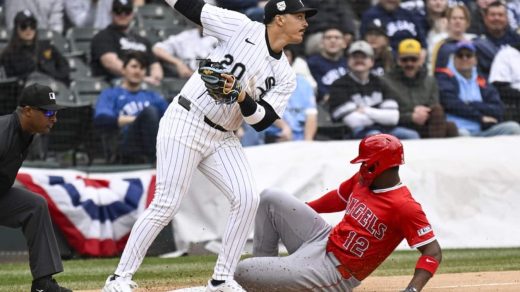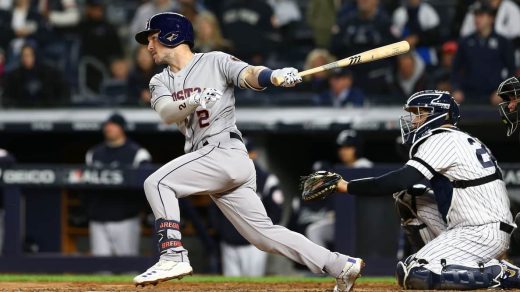The art of contract negotiation has become one of the most complex and fascinating aspects of modern professional baseball.
The highest paid mlb players don’t simply stumble into their massive deals; their contracts represent months or even years of strategic planning, market analysis, and skilled negotiation between some of the smartest minds in sports business.
These deals often set precedents that influence the entire industry for years to come.
Behind every record-breaking contract lies a carefully orchestrated campaign involving player agents, team executives, financial analysts, and legal experts.
The negotiation process has evolved into a sophisticated chess match where timing, leverage, and market conditions can mean the difference between a good deal and a historic payday.
Teams must balance their desire for elite talent against salary cap implications and long-term financial flexibility.
The modern baseball contract negotiation involves far more than simple salary discussions. Today’s deals include complex structures with deferred payments, performance bonuses, opt-out clauses, no-trade provisions, and international marketing rights.
These intricate arrangements require expertise in finance, law, and sports marketing to create agreements that satisfy both players seeking maximum value and teams managing organizational resources.
What makes these negotiations particularly interesting is how they reflect broader trends in baseball economics and player empowerment.
Highest Paid MLB Players 2025

The highest paid mlb players have leveraged their unique talents and market timing to secure deals that previous generations of athletes could never have imagined.
Their success has fundamentally changed how all players approach contract negotiations and career planning in professional sports.
Top 50 Highest Paid Major League Baseball Players 2025
| Rank | Player Name | Team | Annual Salary |
|---|---|---|---|
| 1 | Shohei Ohtani | Los Angeles Dodgers | $70 million |
| 2 | Juan Soto | New York Yankees | $61.9 million |
| 3 | Zack Wheeler | Philadelphia Phillies | $42 million |
| 4 | Aaron Judge | New York Yankees | $40 million |
| 5 | Alex Bregman | Boston Red Sox | $40 million |
| 6 | Jacob deGrom | Texas Rangers | $40 million |
| 7 | Anthony Rendon | Los Angeles Angels | $38.6 million |
| 8 | Carlos Correa | Minnesota Twins | $38.3 million |
| 9 | Mike Trout | Los Angeles Angels | $37.1 million |
| 10 | Blake Snell | Los Angeles Dodgers | $36.4 million |
| 11 | Gerrit Cole | New York Yankees | $36 million |
| 12 | Corbin Burnes | Arizona Diamondbacks | $35 million |
| 13 | Francisco Lindor | New York Mets | $34.1 million |
| 14 | Corey Seager | Texas Rangers | $32.5 million |
| 15 | Jose Altuve | Houston Astros | $32.5 million |
| 16 | Tyler Glasnow | Los Angeles Dodgers | $32.5 million |
| 17 | Giancarlo Stanton | New York Yankees | $32 million |
| 18 | Nolan Arenado | St. Louis Cardinals | $32.5 million |
| 19 | Mookie Betts | Los Angeles Dodgers | $30 million |
| 20 | Pete Alonso | New York Mets | $30 million |
| 21 | Rafael Devers | Boston Red Sox | $29.3 million |
| 22 | Vlad Guerrero Jr. | Toronto Blue Jays | $28.5 million |
| 23 | Dansby Swanson | Chicago Cubs | $28 million |
| 24 | Carlos Rodon | New York Yankees | $27.8 million |
| 25 | Bryce Harper | Philadelphia Phillies | $27.5 million |
| 26 | Cody Bellinger | Chicago Cubs | $27.5 million |
| 27 | Trea Turner | Philadelphia Phillies | $27.2 million |
| 28 | Freddie Freeman | Los Angeles Dodgers | $27 million |
| 29 | Kris Bryant | Colorado Rockies | $27 million |
| 30 | Christian Yelich | Milwaukee Brewers | $26 million |
| 31 | Marcus Semien | Texas Rangers | $26 million |
| 32 | Xander Bogaerts | San Diego Padres | $25.5 million |
| 33 | Matt Chapman | San Francisco Giants | $25.2 million |
| 34 | Jack Flaherty | Detroit Tigers | $25 million |
| 35 | Javier Baez | Detroit Tigers | $25 million |
| 36 | Robbie Ray | San Francisco Giants | $25 million |
| 37 | Sean Manaea | New York Mets | $25 million |
| 38 | Sonny Gray | St. Louis Cardinals | $25 million |
| 39 | Aaron Nola | Philadelphia Phillies | $24.6 million |
| 40 | George Springer | Toronto Blue Jays | $24.1 million |
| 41 | Luis Castillo | Seattle Mariners | $24.1 million |
| 42 | J.T. Realmuto | Philadelphia Phillies | $23.9 million |
| 43 | Kevin Gausman | Toronto Blue Jays | $23 million |
| 44 | Jordan Montgomery | Arizona Diamondbacks | $22.5 million |
| 45 | Trevor Story | Boston Red Sox | $22.5 million |
| 46 | Austin Riley | Atlanta Braves | $22 million |
| 47 | Chris Bassitt | Toronto Blue Jays | $22 million |
| 48 | Chris Sale | Atlanta Braves | $22 million |
| 49 | Matt Olson | Atlanta Braves | $22 million |
| 50 | Nathan Eovaldi | Texas Rangers | $22 million |
Contract Negotiation Strategies by Top Players
- Shohei Ohtani: His negotiation strategy centered on his unprecedented two-way value and global marketability that no other player could match. Ohtani’s team leveraged his unique skills and international appeal to create a bidding war among multiple franchises seeking to capture both his talent and massive marketing potential. Net Worth: $70 million annually
- Juan Soto: The young superstar’s agents used his age, consistent performance, and championship potential to secure the largest contract in baseball history. Soto’s negotiation team emphasized his prime years ahead and clutch hitting ability while creating urgency through strategic timing and multiple suitors competing for his services. Net Worth: $61.9 million annually
- Zack Wheeler: His representation focused on his durability, playoff experience, and consistent ace-level performance to justify premium pitcher compensation. Wheeler’s team highlighted his ability to pitch deep into games and perform under pressure while using market comparisons to establish his value among elite starting pitchers. Net Worth: $42 million annually
- Aaron Judge: The Yankees captain’s negotiation leveraged his leadership qualities, home run power, and status as the face of baseball’s most valuable franchise. Judge’s team used his MVP performance and fan popularity to create leverage while emphasizing his importance to the Yankees brand and championship aspirations. Net Worth: $40 million annually
- Alex Bregman: His agents emphasized his championship experience, versatility, and clutch performance history to secure maximum value from multiple interested teams. Bregman’s negotiation strategy highlighted his playoff success and defensive flexibility while using free agency timing to create competitive bidding among contending organizations. Net Worth: $40 million annually
- Jacob deGrom: Despite injury concerns, his representation focused on his elite stuff and dominant track record when healthy to maintain premium value. DeGrom’s team used his Cy Young awards and historical dominance to justify risk while structuring incentives and health clauses to address durability questions. Net Worth: $40 million annually
- Anthony Rendon: His original contract negotiation emphasized his consistent offensive production and elite defensive skills at a premium position. Rendon’s agents used his championship contribution and steady performance to secure long-term security while the player was entering his prime years with proven major league success. Net Worth: $38.6 million annually
- Carlos Correa: His complex negotiation involved multiple teams and medical considerations while his agents emphasized his shortstop defense and offensive consistency. Correa’s team navigated injury concerns through creative contract structures while highlighting his postseason experience and leadership qualities to maintain elite-level compensation. Net Worth: $38.3 million annually
- Mike Trout: His record-setting extension leveraged his consistent MVP-caliber performance and status as one of baseball’s greatest talents. Trout’s representation used his sustained excellence and marketability to create a deal that set new standards while keeping him with his original organization throughout his prime years. Net Worth: $37.1 million annually
- Blake Snell: His negotiation strategy focused on his Cy Young award, championship experience, and left-handed pitching scarcity in the market. Snell’s team used his playoff success and strikeout ability to justify premium compensation while timing his free agency to capitalize on pitcher demand and market conditions. Net Worth: $36.4 million annually
Market Dynamics Driving Contract Values
The baseball contract market operates according to several key economic principles that drive ever-increasing player salaries.
- Supply and Demand Economics: Elite talent remains extremely scarce while team revenues continue growing, creating natural upward pressure on salaries. The limited number of true superstars forces teams to compete aggressively for available talent, often driving contracts beyond expected market values.
- Revenue Growth and Team Valuations: Television deals, digital streaming, and international expansion have dramatically increased team revenues, providing more money to spend on player salaries. Teams can justify larger contracts because their revenue streams support higher payroll investments while maintaining profitability.
- Free Agency Timing and Market Conditions: Players and agents carefully time free agency to coincide with favorable market conditions, including multiple teams with needs and available budget space. Strategic timing can significantly impact contract values when supply and demand factors align perfectly.
Agent Influence and Negotiation Tactics
Modern baseball agents employ sophisticated strategies to maximize their clients’ contract values through various negotiation techniques.
- Market Research and Comparable Analysis: Top agents conduct extensive research on recent contracts, team financial situations, and player performance metrics to establish negotiating positions. They use data analytics and market trends to justify asking prices and counter team offers effectively.
- Creating Competition and Leverage: Skilled agents orchestrate bidding wars by engaging multiple teams simultaneously while controlling information flow and negotiation timing. They create urgency and competition that drives up final contract values beyond initial team offers.
- Contract Structure Innovation: Agents work with financial experts to create contract structures that address team concerns while maximizing player value. These innovations include deferred payments, performance incentives, and opt-out clauses that provide flexibility for both parties.
Future Contract Trends and Predictions
Several emerging trends will likely influence future baseball contract negotiations and player compensation structures.
- International Market Integration: Growing global interest in baseball will create additional revenue streams that support even higher player salaries. International broadcasting rights and marketing opportunities will become increasingly important factors in contract negotiations.
- Analytics and Performance Metrics: Advanced statistics will play larger roles in contract negotiations as both players and teams use data to support their positions. New metrics and analytical approaches will influence how player value is calculated and negotiated.
- Younger Player Extensions: Teams will increasingly focus on extending young players before they reach expensive free agency, creating new negotiation dynamics and contract structures that balance security with performance incentives.
Frequently Asked Questions
- How do player agents influence these massive contract negotiations?
Agents play crucial roles by conducting market research, creating competition among teams, and structuring deals that maximize player value. Top agents use data analytics, relationship networks, and negotiation expertise to secure optimal contracts for their clients.
- What factors determine the timing of contract negotiations?
Players and agents consider market conditions, team needs, competitor availability, and economic cycles when timing negotiations. Strategic timing can significantly impact final contract values by capitalizing on favorable supply and demand dynamics.
- How do teams justify spending $50+ million annually on individual players?
Teams analyze revenue generation, championship impact, and marketing value when justifying large contracts. Elite players drive ticket sales, television ratings, and merchandise revenue that often exceeds their salary costs while providing competitive advantages.
- What role do comparable contracts play in salary negotiations?
Recent signings establish market baselines that agents use to justify asking prices while teams reference them to control costs. Comparable analysis helps both sides understand market value and create realistic negotiation parameters.
- How do contract structures benefit both players and teams?
Creative structures address different priorities through deferred payments, performance incentives, and flexibility clauses. Players gain security and upside potential while teams manage current costs and future flexibility through innovative contract arrangements.
Also Check:
Conclusion:
The world of baseball contract negotiations has evolved into a sophisticated business arena where the highest paid MLB players secure their massive deals through strategic planning, expert representation, and perfect market timing.
These negotiations reflect the sport’s economic growth and the increasing value of elite athletic talent in the global entertainment marketplace.
Understanding how these record-breaking contracts are negotiated provides insight into the business dynamics that drive modern professional sports.
The combination of skilled agents, favorable market conditions, and unprecedented revenue growth has created an environment where exceptional players can secure compensation that seemed impossible just decades ago.
As baseball continues expanding globally and finding new revenue sources, contract negotiations will become even more complex and valuable.
The strategies and market dynamics that create today’s massive deals will continue evolving, ensuring that future generations of elite players will have opportunities to secure even more extraordinary compensation packages through skilled negotiation and strategic career planning.


